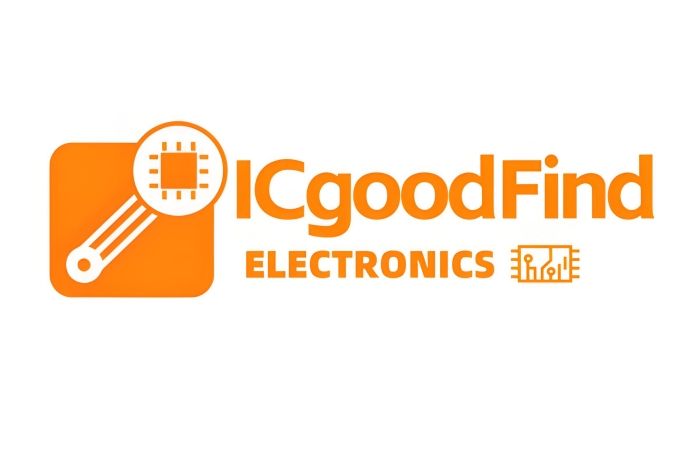**AD7224KP: A Comprehensive Technical Overview and Application Guide**
The **AD7224KP** is a monolithic, quad, 8-bit voltage-output digital-to-analog converter (DAC) that has established itself as a reliable and versatile component in the world of digital analog conversion. Integrating four precision DACs, an output buffer amplifier, and interface logic onto a single chip, it provides a compact and efficient solution for a multitude of applications requiring multiple analog output channels.
**Architectural Overview and Key Specifications**
At its core, the AD7224KP consists of four identical 8-bit DAC units. Each DAC is built around a **ladder network architecture**, ensuring consistent performance across all channels. A key feature is the inclusion of a **precision output buffer amplifier** for each DAC. This amplifier is engineered to provide a voltage output with excellent linearity and is capable of driving load currents up to 5 mA.
The device operates with a single power supply voltage ranging from **+11.4V to +16.5V**, though a standard +12V or +15V supply is most common. Its digital interface is designed for straightforward connection to most microprocessors and digital systems. It features **double-buffered input logic**, comprising an 8-bit input register for each DAC and a common DAC register. This architecture allows all four DACs to be updated simultaneously or independently, providing significant flexibility in control.
Critical performance specifications include:
* **Resolution:** 8 Bits
* **Integral Nonlinearity (INL):** ±½ LSB (Max)
* **Settling Time:** Typically 5 µs to within ±½ LSB for a full-scale step
* **Power Consumption:** Typically 75 mW
**Interface and Control Logic**
The control of the AD7224KP is managed through three address inputs (A0, A1) and a write signal (`WR`). The address inputs select which of the four input registers is to be loaded with the data present on the 8-bit data bus. The **double-buffering** is crucial; data written to the input registers does not immediately affect the analog output. The analog output only updates when the `LDAC` (Load DAC) signal is pulsed low, transferring the data from all input registers to their respective DAC registers simultaneously. This feature is indispensable for applications requiring coordinated changes across multiple analog channels.
**Typical Application Circuits**
The AD7224KP excels in multi-channel control systems. A fundamental connection diagram involves interfacing its 8-bit data bus and control lines (`WR`, `A0`, `A1`, `LDAC`) directly to a microcontroller's I/O ports. The output voltages from each channel (VOUT A, B, C, D) can then be used to drive subsequent stages.

1. **Programmable Voltage Source:** Each channel can be individually programmed to generate a specific DC voltage. By combining it with a software-based algorithm, it can create complex waveforms or act as a programmable bias generator.
2. **Automated Test Equipment (ATE):** Its quad architecture makes it ideal for ATE systems where multiple independent voltage references are needed to stimulate or calibrate different parts of a device under test (DUT).
3. **Motion Control Systems:** The four channels can provide control voltages for a multi-axis positioning system, directing the speed or position of various actuators.
**Design Considerations and Best Practices**
To ensure optimal performance from the AD7224KP, several design practices must be followed:
* **Power Supply Decoupling:** Proper decoupling is paramount. A **0.1 µF ceramic disc capacitor** should be placed as close as possible to the VDD pin and AGND to suppress high-frequency noise.
* **Grounding:** Maintaining a clean, low-impedance analog ground (AGND) is essential for achieving good linearity and low noise. Digital and analog grounds should be connected at a single point.
* **Reference Voltage:** While the device uses its internal feedback resistors, the full-scale output range is directly proportional to the applied VREF voltage. A stable, low-noise reference voltage is critical for overall accuracy.
* **Unused Inputs:** All unused digital inputs (e.g., address lines) must be tied to a valid logic high or low state to prevent excessive current draw and noise.
ICGOOODFIND: The **AD7224KP** remains a highly effective and integrated solution for systems demanding multiple, synchronized 8-bit analog outputs. Its **built-in output amplifiers** and **straightforward microprocessor interface** simplify design complexity, reducing component count and board space. While modern higher-resolution DACs exist, the AD7224KP's combination of robustness, simplicity, and multi-channel integration continues to make it a compelling choice for industrial control, instrumentation, and ATE applications.
**Keywords:**
1. **Digital-to-Analog Converter (DAC)**
2. **Quad Channel**
3. **Voltage Output**
4. **Microprocessor Interface**
5. **Simultaneous Update**
